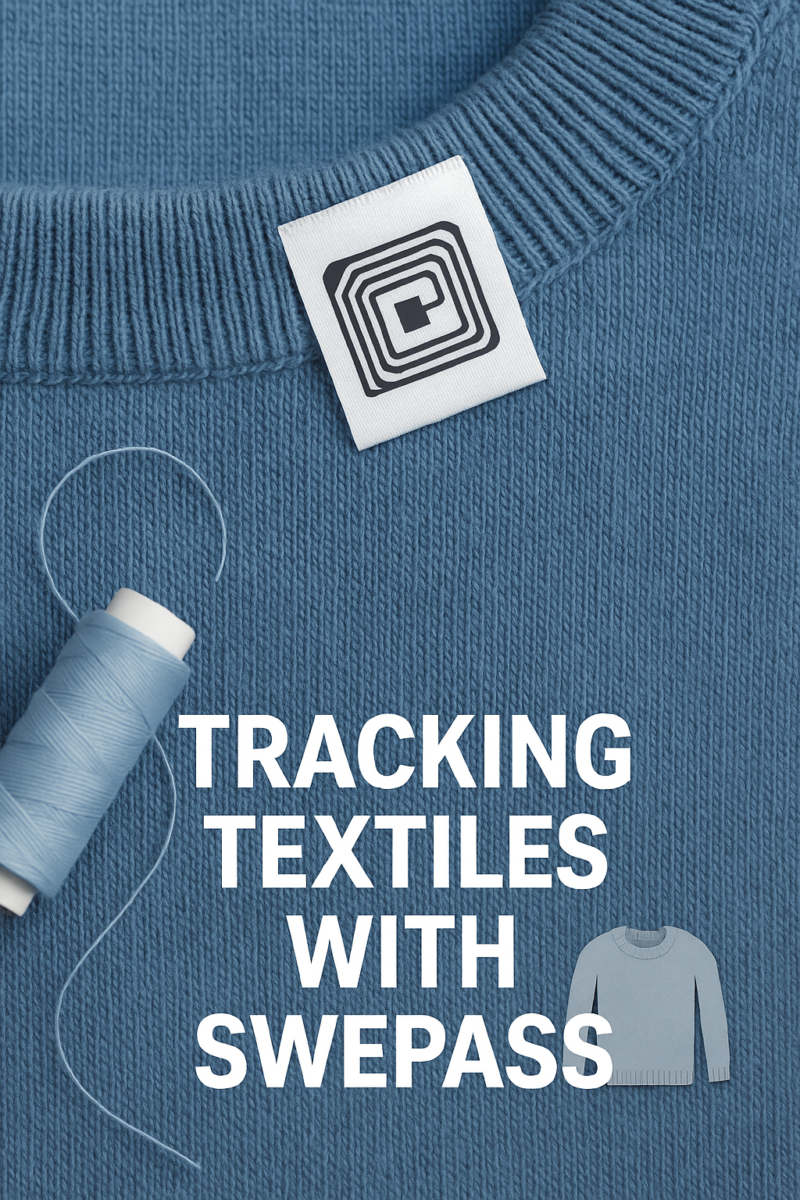Tracking textiles with SwePass
How do we know what a textile is made of, how long it’s been used, or whether it’s suitable for recycling? In the SwePass demonstrator for the textile sector, RISE and several industry partners are trying to answer exactly that—with the help of digital product passports and a new generation of data carriers and RFID tags.
The goal is clear: to support a more circular textile economy through smarter sorting and better data. But delivering on that goal requires more than just vision—it demands technical testing, industry collaboration, and flexibility in the face of shifting regulations.
Prototyping for real-world use
At the core of the demonstrator is the development of a sustainability-adapted data carrier for DPP. The data carriers is being designed for integration into textiles and intended to:
- Survive the full user phase of a garment
- Carry or link to key data points from a digital product passport (DPP)
- Be automatically read during sorting
- Support decision-making for reuse, recycling, or disposal
The prototype will be tested and evaluated under realistic conditions, with the aim of identifying solutions that meet both industry requirements and regulatory expectations.
Mapping needs across the value chain
Rather than designing a solution in isolation, the SwePass team is working with stakeholders across the full textile value chain—including fashion brands, label producers, data platforms and sorting operators.
– We’re working with the entire value chain, from supporting digital plattforms and brands to collecting and sorting of textile waste, to understand what’s needed and what actually works in practice, says Catrine Marchall, Project leader for the textile reuse and recycling demonstrator in SwePass & senior Project manager for textiles materials at RISE.
Workshops with project partners are used to align requirements and explore technical options. Multiple types of data carriers are under consideration, including both existing and emerging RFID technologies.
Testing in operational environments
Later in the project, a pilot will be conducted in collaboration with a sorting facility that handles post-consumer textile waste. The pilot will test how different RFID-tagged items perform in real-world conditions, and whether key data can reliably support automated sorting for reuse or recycling.
The pilot will also provide feedback to an existing decision support tool developed under the EU project CISUTAC, helping refine its application under future DPP conditions.
A final project output will include test results on the durability and performance of data carriers and a practical guide for industry stakeholders on how to integrate these tools into their processes.
Tackling real challenges
While the potential is clear, several key challenges remain:
- Durability: Tags must withstand the realities of textile use—washing, wear, and long storage—without losing functionality.
- Data management: There is still work to be done in defining how DPP data should be structured, accessed and transferred across platforms.
- Regulatory uncertainty: With EU regulations like the Ecodesign for Sustainable Products Regulation and Waste Framework Directive still evolving, the team must remain agile.
- Industry alignment: Clear quality benchmarks for tags are lacking, and industry consensus is needed before broader rollout.
– The technology is moving quickly, but the legal frameworks are still catching up. That means we need to stay flexible, especially going into 2026,
Catrine says.
Supporting future regulation and scaling
By working with a partner focused on large-scale textile collection and sorting, the SwePass team will be able to test and evaluate solutions in a live setting. Insights and lessons learned will be shared with industry stakeholders and feed into the ongoing EU policy dialogue.
While scaling depends on harmonised Extended Producer Responsibility (EPR) systems across Europe, SwePass is helping identify what’s already possible—and where the biggest gaps are.
